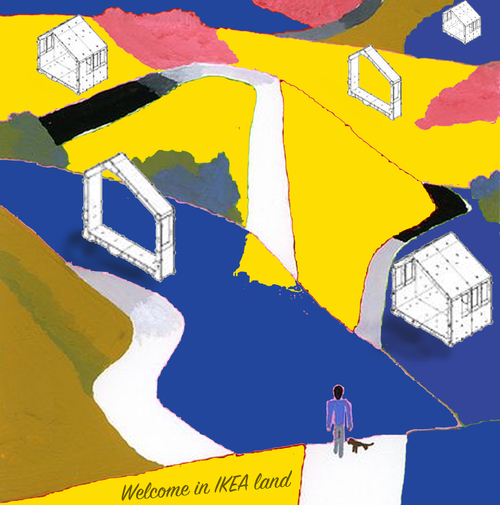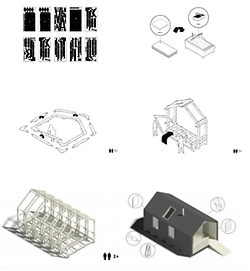
Open Source has a lot of advantages. It makes people around the world collaborate, that normally won’t collaborate. Problems in software are also quickly resolved. The design that belongs to Open Source is called Open Design. You can find different categories in Open Design. On the one hand projects for the common good for example developing countries or to help spread ecological or cheaper technologies. On the other handopen design may provide a framework for developing advanced projects and technologies that might be beyond the resource of any single company or country (3). New innovations can be created because particular parts can be copied from Open Design. There is also a new third category developed: where these two methods come together to use high-tech open-source (e.g. 3D printing) but customized local solutions for sustainable development. An example of this third category is the WikiHouse.
If the new Open Architecture concept will collaborate with the Smart City concept, useful data of cities can be translated in designs accessible for anyone. But these concepts also create certain risks. The biggest risk lies in the force of the concept: the openness. Because everyone can contribute to the Open Community, also bad ideas can spread easily. The Open Source/Design/Architecture also includes no boundaries. This can be a problem in for example the architecture industrie. Different laws and values are applied in every country and this is not taken into account in the general design. For example the fire safety rules. Also the safety and privacy of people can be damaged. Because it is a new promising market, a risk analysis would be a great idea.
I think the future lays in Open Source and Open Architecture. It would be profitable for technical and designing studies to learn about this subject and the risks because it will be a big part of our future.
Sources:
1. and 2. Kimberley Mok (2014). WikiHouse: Open Source Sustainable House Designs That Anyone Can Build.http://thenewstack.io/wikihouse-open-source-sustainable-house-designs-that-anyone-can-build/
3. and 4. exaplantion Open Design https://en.wikipedia.org/wiki/Open_design
5. WikHouse exaplantion. Source: https://www.youtube.com/watch?v=4fB3SFgKPog
6. Risks using open source software. Source: https://powermore.dell.com/technology/risks-using-open-source-software/
7. Open Source information. Source: https://en.wikipedia.org/wiki/Open_source
8. Image: welcome in IKEA land made by Lisa Gerards
